Abstract
1. The contribution of vasomotor tone to the increased stiffness of carotid arteries in living spontaneously hypertensive rats (SHR) is largely unknown. Whether a reduced vascular tone is associated with an increase or a decrease in arterial stiffness in vivo remains to be determined. The goal of the present investigation was to show that a decrease in vascular tone is associated with a decrease in arterial stiffness, independent of the structural composition of the arterial wall. 2. New high resolution echo-tracking techniques were used to evaluate pulsatile changes of carotid blood pressure and diameter following transient and graded changes of vasomotor tone produced by the dihydropyridine derivative, isradipine. Treatment for 8 weeks was given to groups of SHR rats either with a low (0.6 kg day-1) or a high (2.6 mg kg-1 day-1) dose. Another SHR group received an acute dose of 2.6 mg kg-1 day-1. Results were compared to those of placebo-treated Wystar-Kyoto (WKY) and SHR rats. Whatever the dosage, acute or chronic calcium blockade caused a decrease in blood pressure which was maximal 1 h after administration and disappeared after the 16th h. Carotid arterial thickness and the composition of the arterial wall was determined from histomorphometry. 3. In placebo-treated SHR, the inverse relationship relating blood pressure to carotid arterial distensibility was significantly shifted toward higher values of blood pressure compared to the curve of normotensive placebo-treated WKY rats. The curve of SHR receiving chronically a non antihypertensive (0.6 mg kg-1 day-1) isradipine dose prolonged that of placebo-treated SHR toward lower values of blood pressure, so that carotid distensibility was significantly higher than in WKY for the same diameter and blood pressure level (145 mmHg). With administration of a chronic antihypertensive dose (2.6 mg kg-1 day-1) causing a significant decrease in arterial function. Acute antihypertensive calcium blockade with a single isradipine dose (2.6 mg kg-1 day-1) caused a similar shift in the pressure-distensibility curve toward the WKY curve although the histomorphometric composition of the arterial wall differed significantly from that of chronically treated animals.(ABSTRACT TRUNCATED AT 400 WORDS)
Full text
PDF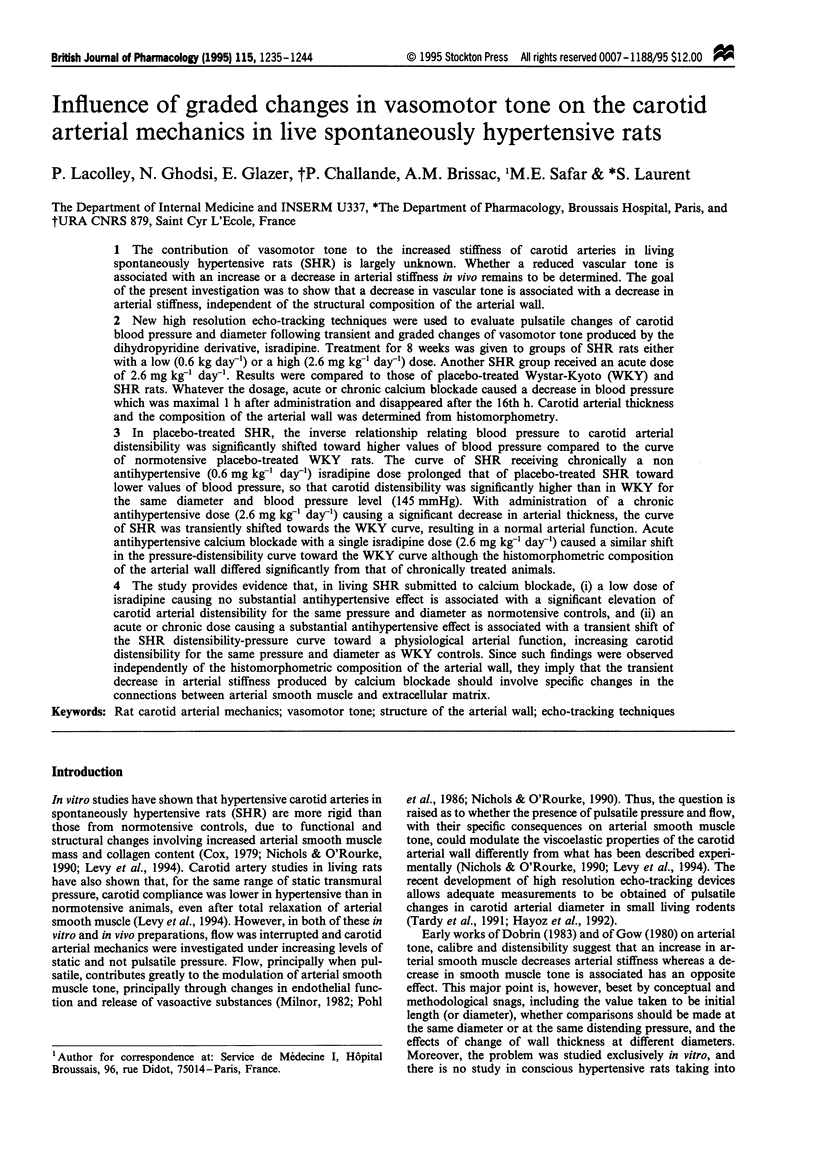
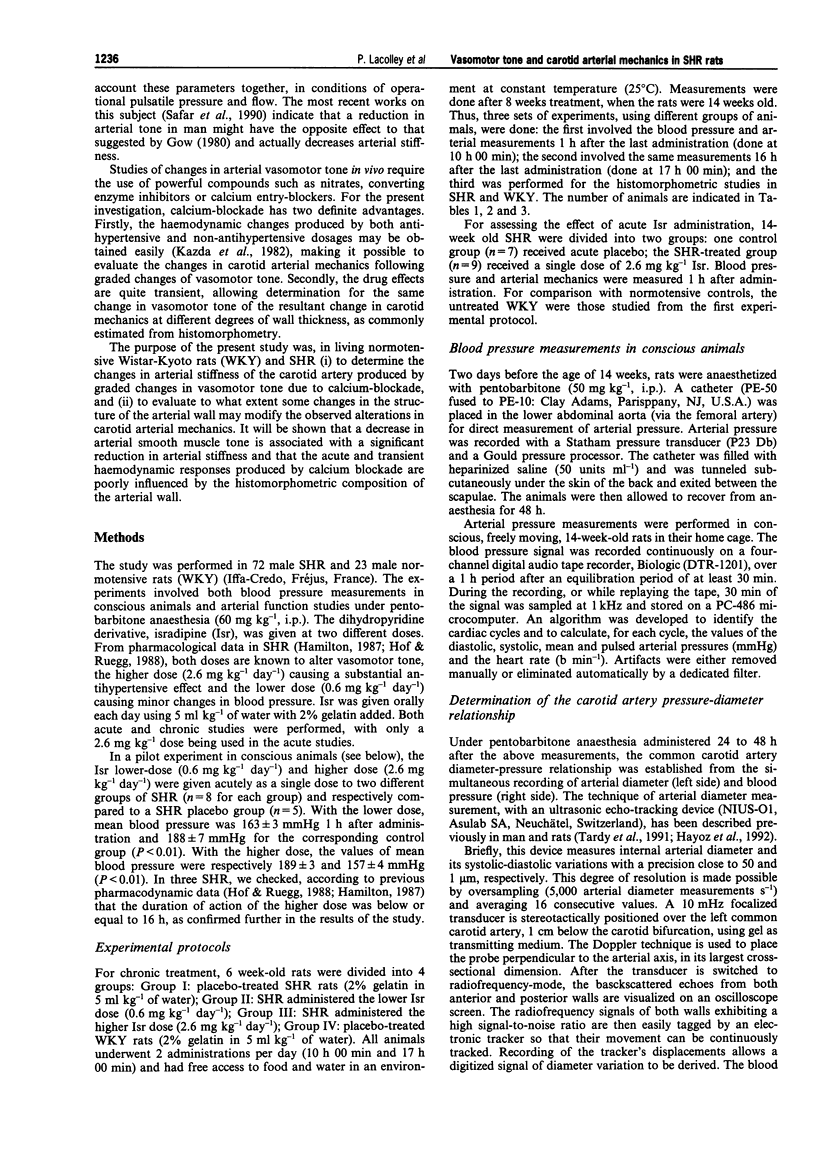
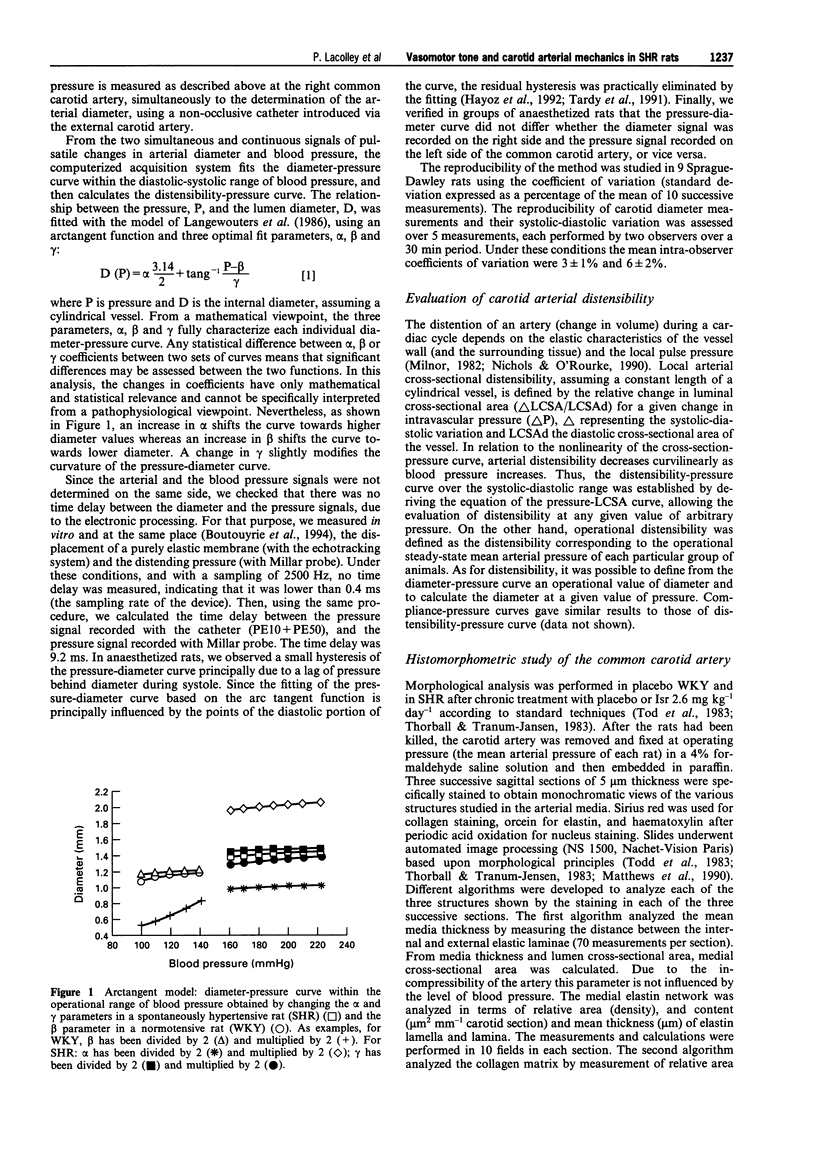
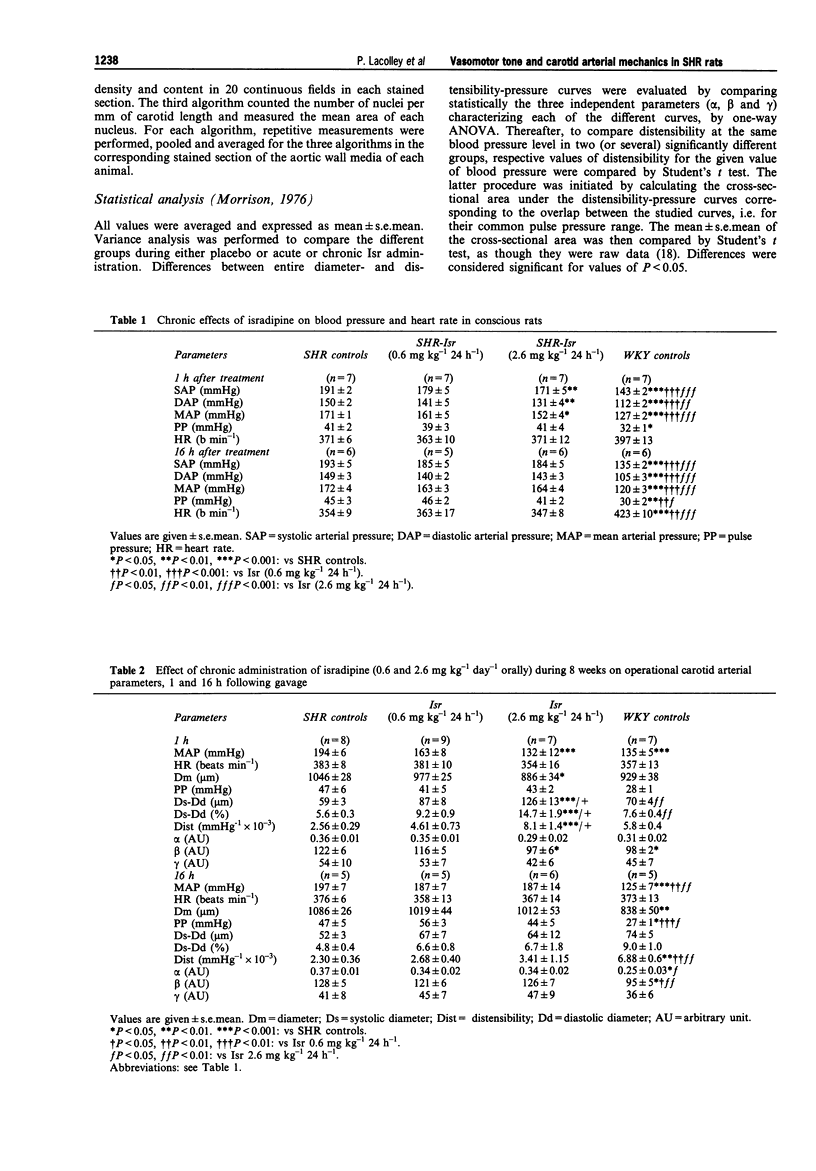
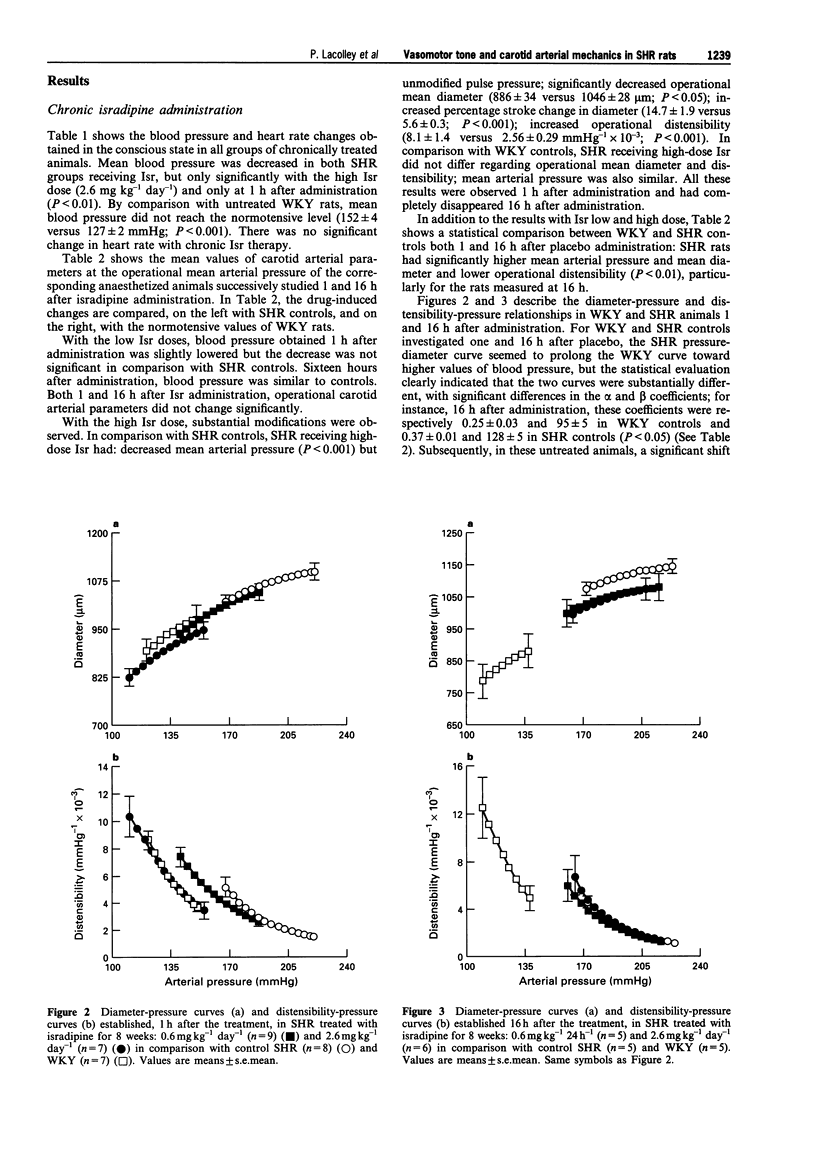
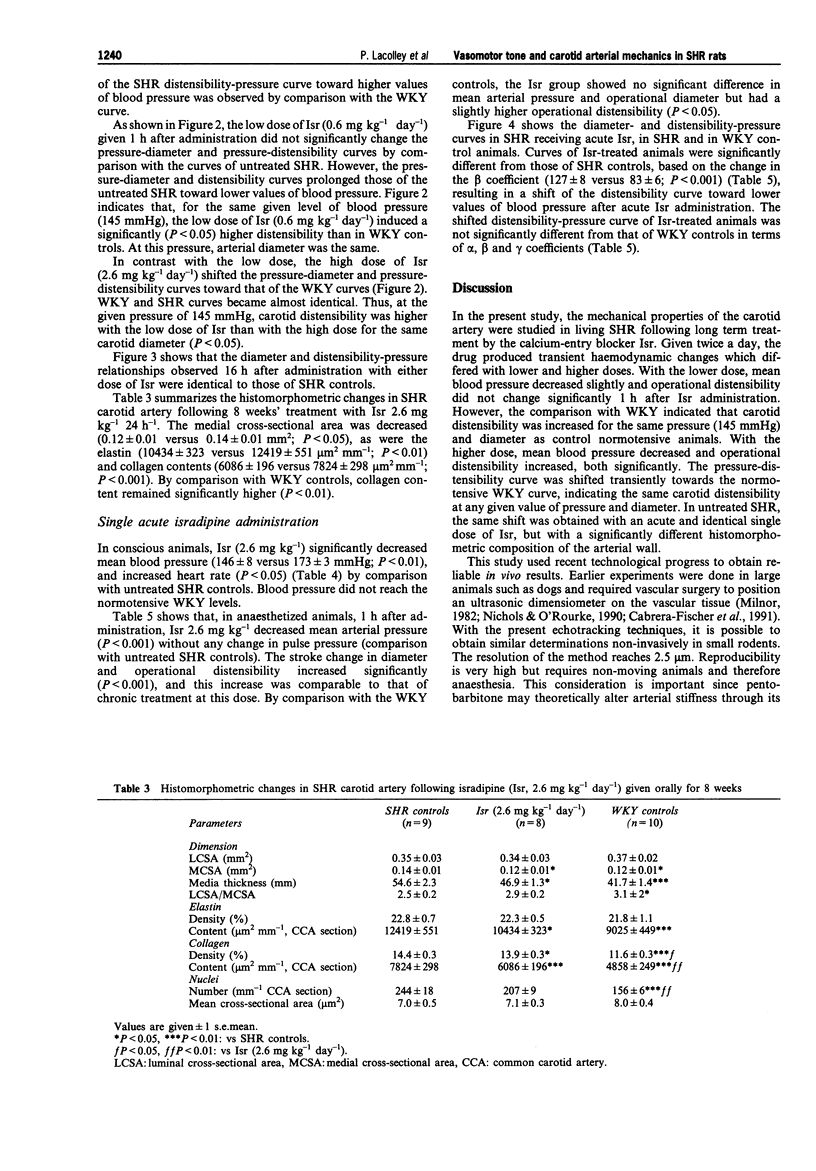
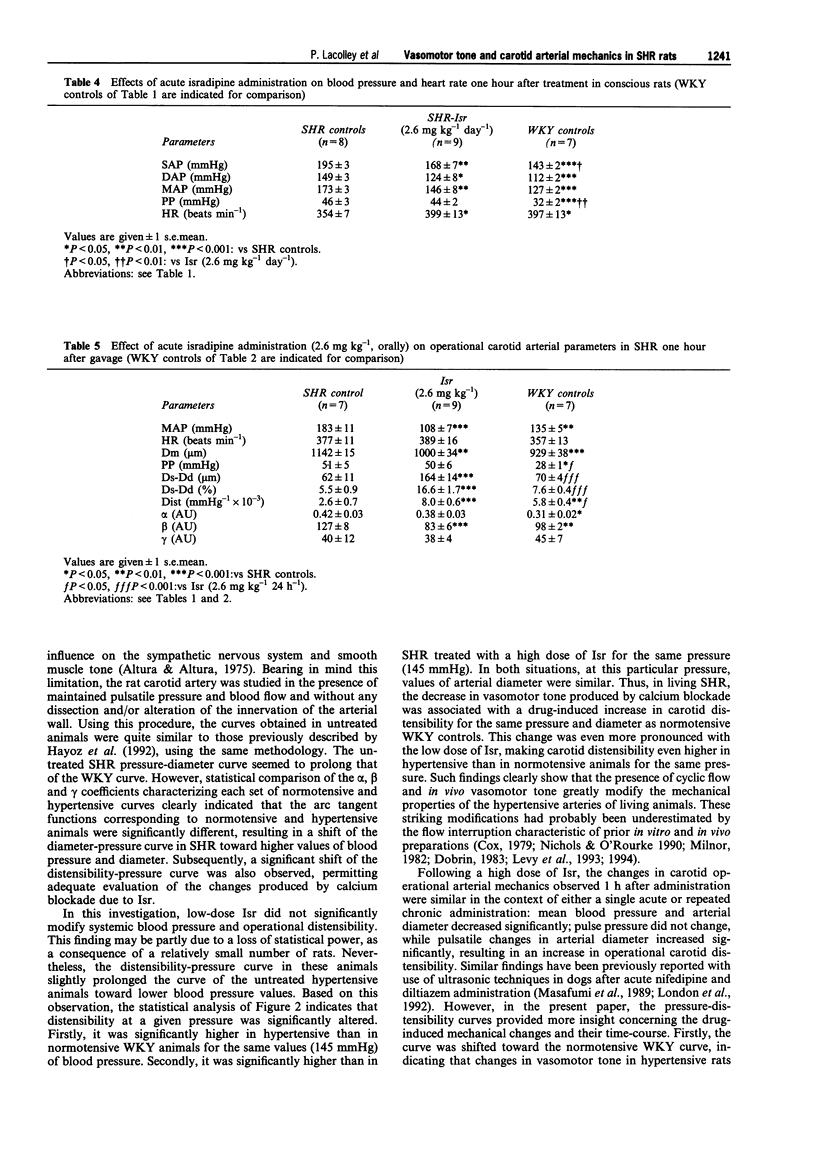
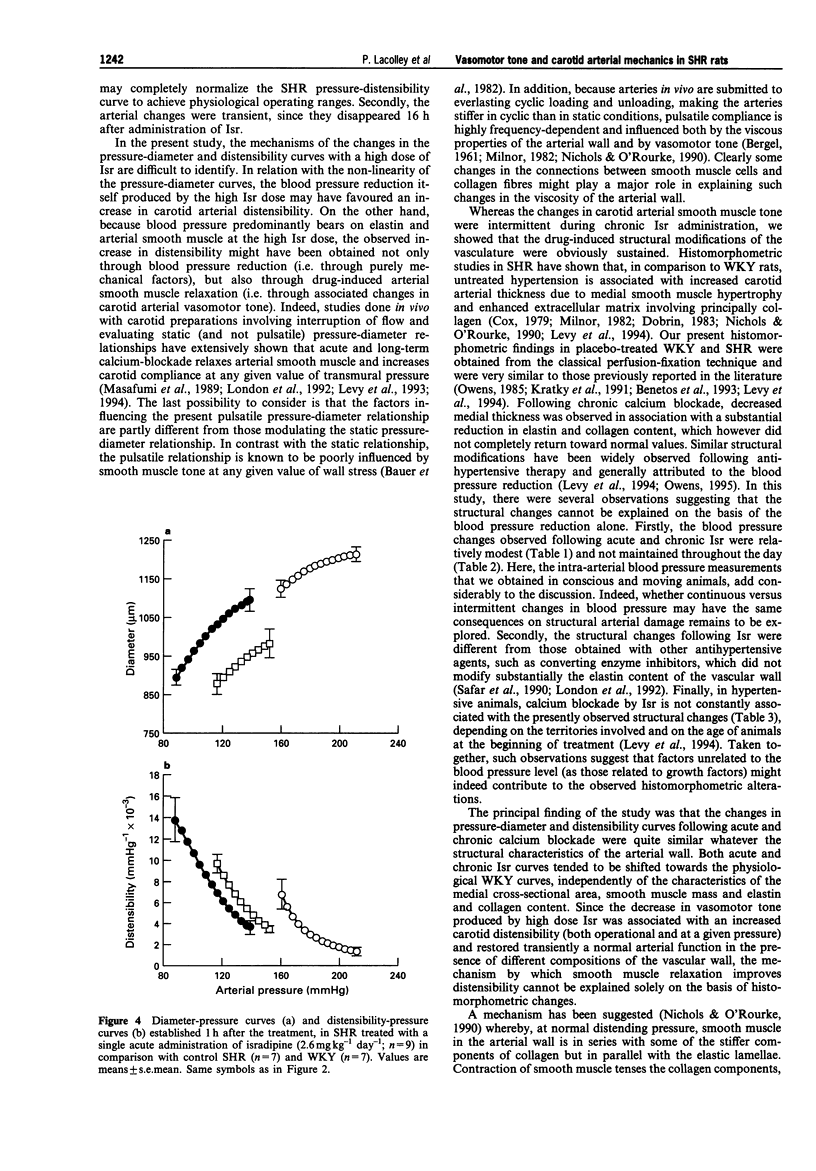
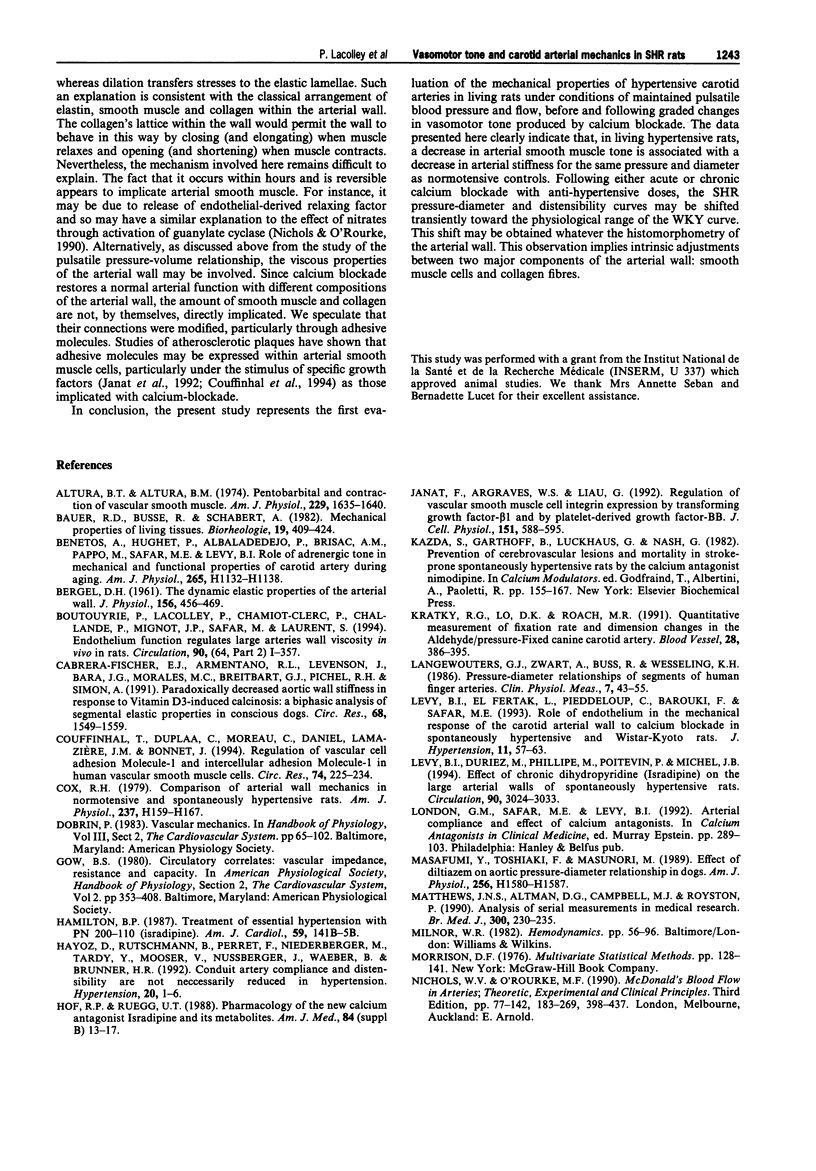
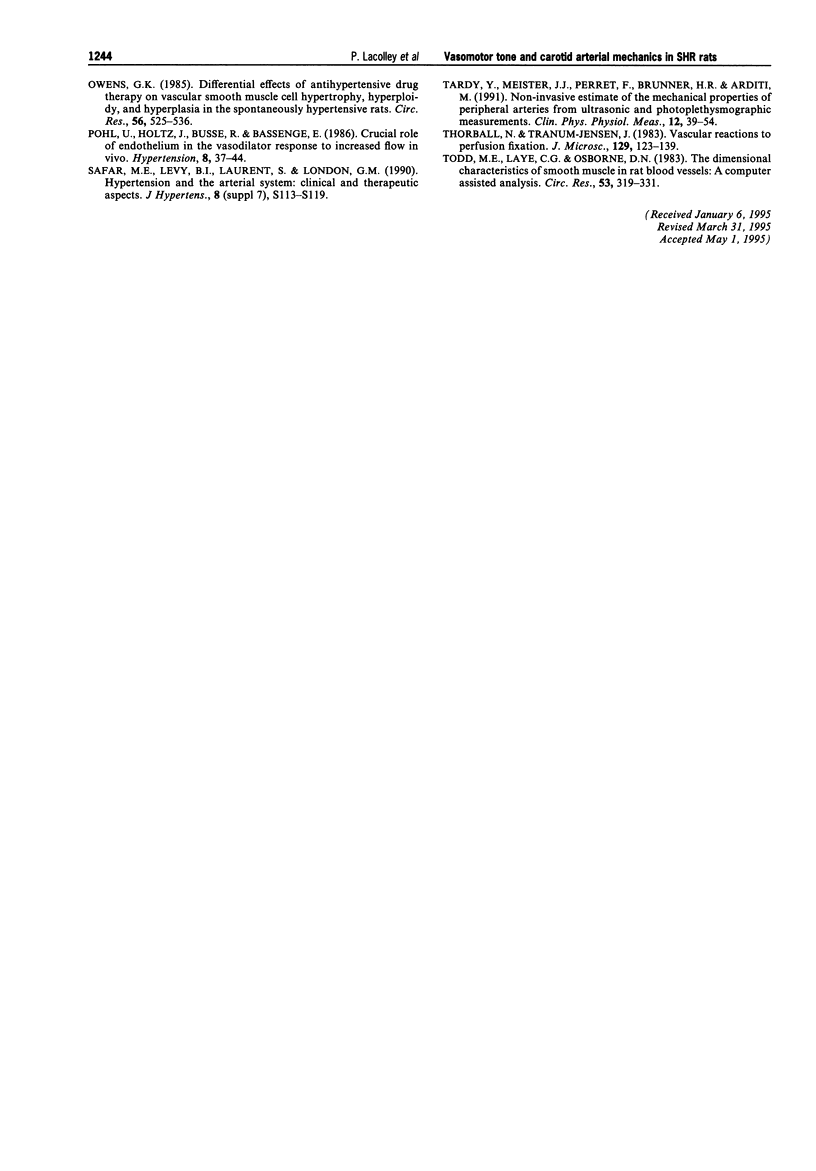
Selected References
These references are in PubMed. This may not be the complete list of references from this article.
- Altura B. T., Altura B. M. Pentobarbital and contraction of vascular smooth muscle. Am J Physiol. 1975 Dec;229(6):1635–1640. doi: 10.1152/ajplegacy.1975.229.6.1635. [DOI] [PubMed] [Google Scholar]
- Bauer R. D., Busse R., Schabert A. Mechanical properties of arteries. Biorheology. 1982;19(3):409–424. doi: 10.3233/bir-1982-19303. [DOI] [PubMed] [Google Scholar]
- Bergel D. H. The dynamic elastic properties of the arterial wall. J Physiol. 1961 May;156(3):458–469. doi: 10.1113/jphysiol.1961.sp006687. [DOI] [PMC free article] [PubMed] [Google Scholar]
- Cabrera Fischer E. I., Armentano R. L., Levenson J., Barra J. G., Morales M. C., Breitbart G. J., Pichel R. H., Simon A. Paradoxically decreased aortic wall stiffness in response to vitamin D3-induced calcinosis. A biphasic analysis of segmental elastic properties in conscious dogs. Circ Res. 1991 Jun;68(6):1549–1559. doi: 10.1161/01.res.68.6.1549. [DOI] [PubMed] [Google Scholar]
- Couffinhal T., Duplàa C., Moreau C., Lamazière J. M., Bonnet J. Regulation of vascular cell adhesion molecule-1 and intercellular adhesion molecule-1 in human vascular smooth muscle cells. Circ Res. 1994 Feb;74(2):225–234. doi: 10.1161/01.res.74.2.225. [DOI] [PubMed] [Google Scholar]
- Cox R. H. Comparison of arterial wall mechanics in normotensive and spontaneously hypertensive rats. Am J Physiol. 1979 Aug;237(2):H159–H167. doi: 10.1152/ajpheart.1979.237.2.H159. [DOI] [PubMed] [Google Scholar]
- Hamilton B. P. Treatment of essential hypertension with PN 200-110 (isradipine). Am J Cardiol. 1987 Jan 30;59(3):141B–145B. doi: 10.1016/0002-9149(87)90094-4. [DOI] [PubMed] [Google Scholar]
- Hayoz D., Rutschmann B., Perret F., Niederberger M., Tardy Y., Mooser V., Nussberger J., Waeber B., Brunner H. R. Conduit artery compliance and distensibility are not necessarily reduced in hypertension. Hypertension. 1992 Jul;20(1):1–6. doi: 10.1161/01.hyp.20.1.1. [DOI] [PubMed] [Google Scholar]
- Janat M. F., Argraves W. S., Liau G. Regulation of vascular smooth muscle cell integrin expression by transforming growth factor beta1 and by platelet-derived growth factor-BB. J Cell Physiol. 1992 Jun;151(3):588–595. doi: 10.1002/jcp.1041510319. [DOI] [PubMed] [Google Scholar]
- Kratky R. G., Lo D. K., Roach M. R. Quantitative measurement of fixation rate and dimension changes in the aldehyde/pressure-fixed canine carotid artery. Blood Vessels. 1991;28(5):386–395. doi: 10.1159/000158885. [DOI] [PubMed] [Google Scholar]
- Langewouters G. J., Zwart A., Busse R., Wesseling K. H. Pressure-diameter relationships of segments of human finger arteries. Clin Phys Physiol Meas. 1986 Feb;7(1):43–56. doi: 10.1088/0143-0815/7/1/003. [DOI] [PubMed] [Google Scholar]
- Levy B. I., Duriez M., Phillipe M., Poitevin P., Michel J. B. Effect of chronic dihydropyridine (isradipine) on the large arterial walls of spontaneously hypertensive rats. Circulation. 1994 Dec;90(6):3024–3033. doi: 10.1161/01.cir.90.6.3024. [DOI] [PubMed] [Google Scholar]
- Lévy B. I., el Fertak L., Pieddeloup C., Barouki F., Safar M. E. Role of endothelium in the mechanical response of the carotid arterial wall to calcium blockade in spontaneously hypertensive and Wistar-Kyoto rats. J Hypertens. 1993 Jan;11(1):57–63. doi: 10.1097/00004872-199301000-00009. [DOI] [PubMed] [Google Scholar]
- Matthews J. N., Altman D. G., Campbell M. J., Royston P. Analysis of serial measurements in medical research. BMJ. 1990 Jan 27;300(6719):230–235. doi: 10.1136/bmj.300.6719.230. [DOI] [PMC free article] [PubMed] [Google Scholar]
- Owens G. K. Differential effects of antihypertensive drug therapy on vascular smooth muscle cell hypertrophy, hyperploidy, and hyperplasia in the spontaneously hypertensive rat. Circ Res. 1985 Apr;56(4):525–536. doi: 10.1161/01.res.56.4.525. [DOI] [PubMed] [Google Scholar]
- Pohl U., Holtz J., Busse R., Bassenge E. Crucial role of endothelium in the vasodilator response to increased flow in vivo. Hypertension. 1986 Jan;8(1):37–44. doi: 10.1161/01.hyp.8.1.37. [DOI] [PubMed] [Google Scholar]
- Tardy Y., Meister J. J., Perret F., Brunner H. R., Arditi M. Non-invasive estimate of the mechanical properties of peripheral arteries from ultrasonic and photoplethysmographic measurements. Clin Phys Physiol Meas. 1991 Feb;12(1):39–54. doi: 10.1088/0143-0815/12/1/003. [DOI] [PubMed] [Google Scholar]
- Thorball N., Tranum-Jensen J. Vascular reactions to perfusion fixation. J Microsc. 1983 Feb;129(Pt 2):123–139. doi: 10.1111/j.1365-2818.1983.tb04167.x. [DOI] [PubMed] [Google Scholar]
- Todd M. E., Laye C. G., Osborne D. N. The dimensional characteristics of smooth muscle in rat blood vessels. A computer-assisted analysis. Circ Res. 1983 Sep;53(3):319–331. doi: 10.1161/01.res.53.3.319. [DOI] [PubMed] [Google Scholar]
- Yano M., Kumada T., Matsuzaki M., Kohno M., Hiro T., Kohtoku S., Miura T., Katayama K., Ozaki M., Kusukawa R. Effect of diltiazem on aortic pressure-diameter relationship in dogs. Am J Physiol. 1989 Jun;256(6 Pt 2):H1580–H1587. doi: 10.1152/ajpheart.1989.256.6.H1580. [DOI] [PubMed] [Google Scholar]


